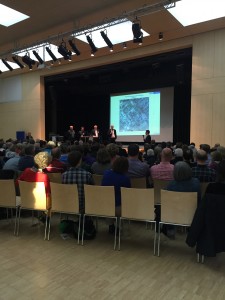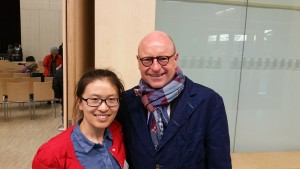The paper “Public displays for public participation in urban settings: a survey” (Authors: Guiying Du, Auriol Degbelo, Christian Kray) has been accepted for publication in the 6th ACM International Symposium on Pervasive Displays.
Abstract: Public displays can be used to support public participation in urban settings. This article provides a survey of the use of public displays for public participation in an urban con- text, covering articles on this topic published between 2012 and 2016. 36 papers were selected and analyzed along eight dimensions: type of political context, type of scientific contribution, standalone displays vs displays with a device, single vs multi-purpose displays, shape of displays, lab vs field study, deployment in public vs semi-public space, and the level of public participation addressed. Our analysis revealed a number of trends regarding public displays and public participation in urban settings. Inspecting these articles also led to the observation that current research on public displays is mainly targeting lower levels of public participation and that the evaluation of public displays for public participation in urban setting remains a challenge.
 On April 7th, 2016, GEO-C in Muenster attended the public event of Oxford Barracks which was held by the city council of Muenster in Stein Gymnasium at Münster, Germany. This event was a dialogue between urban planners and citizens about an urban design for the zoning change of Oxford Barracks. Around 300 citizens attended this event.Lord Mayor Markus Lewe also attended the event.
On April 7th, 2016, GEO-C in Muenster attended the public event of Oxford Barracks which was held by the city council of Muenster in Stein Gymnasium at Münster, Germany. This event was a dialogue between urban planners and citizens about an urban design for the zoning change of Oxford Barracks. Around 300 citizens attended this event.Lord Mayor Markus Lewe also attended the event. this survey was to collect background information of public participation in urban planning process. As a result 100 questionnaires and 30 email addresses from attendees were collected. We got the final survey results by analyzing questionnaires and sent them to citizens who gave their email addresses. Here is a short summary of the main survey facts:
this survey was to collect background information of public participation in urban planning process. As a result 100 questionnaires and 30 email addresses from attendees were collected. We got the final survey results by analyzing questionnaires and sent them to citizens who gave their email addresses. Here is a short summary of the main survey facts: